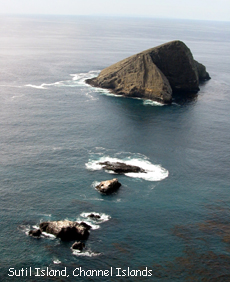History of Coastal Biodiversity Surveys

Change within ecological systems is likely to be the basis of some of the most important and urgent societal questions over the next fifty years. There is substantial evidence that some ecological communities have already been severely compromised. Even conservative projections suggest that the rate of ecological change will rapidly accelerate over the next fifty years.
Marine systems were once considered to be buffered from change, particularly human induced change, by their apparent vastness and because of the exchange of individuals among spatially separated areas. It is now clear that marine systems are among the most sensitive systems. The interface between the land and sea is particularly vulnerable. These coastal regions are where the majority of humans live and where the majority of human induced impacts occur. Paradoxically, increased interest in marine systems has led to an increase in regulated protection but also much greater use of such systems.
Perhaps the greatest challange confronting the management and conservation of these nearshore ecological communities is balancing the need for protection against the importance of promoting increased access, which leads to increased awareness. Paramount in meeting this challange is determining the spatial and temporal patterns in these ecological communities. Without this fundamental information, management and conservation decisions will be made in ignorance and will almost certainly lead to undesirable outcomes.
The Coastal Biodiversity Surveys (CBS) were established in 2001 to compliment our ongoing large scale monitoring program that looks at patterns of intertidal species' abundance and distribution over a large geographical and temporal scale. These surveys are called the 'Community Dynamics Surveys.' Minerals Management Service and PISCO have been funding intertidal monitoring throughout central and southern California since the early 1990's. This monitoring has been conducted by members of MARINe and PISCO.
The focus of the Community Dynamics Surveys is to examine temporal changes within permanent plots. These plots are sampled in the fall and spring each year to monitor the main communities found on intertidal benches. With this regular sampling, seasonal and annual variation among intertidal communities has been established.
Dramatic changes within the community structure has occurred in at many sites. For example, at many sites plots established to monitor barnacle communities became overgrown by Endocladia muricata, a marine alga which usually lives below the barnacles along the shore. This shift changed the overall community of those plots and the sites in general. Many other species also showed distributional shifts over the period that we have been sampling these permanent plots (1992 to current). The dramatic changes we have seen, coupled with an enhanced appreciation of the need to make detailed evaluations of patterns of species composition led us to design the Coastal Biodiversity Surveys (CBS)
To quantify species' distribution and abundance, topographical and species data are recorded across an entire rocky bench. This enables us to create a three-dimensional fine-scale map of the intertidal bench. Each species can then be mapped over the topography, yielding a layered Geographical Information System rendition of the species' distribution. After CBS sites were established on benches where other long term monitoring projects existed, they were extended along the entire coast of temperate North America.
Past efforts directed at sampling biodiversity patterns have been compromised because of variation in sampling design, sampling effort and sampler expertise. Hence, we have used identical sampling in terms of design, effort and expertise at all of our sites. Through this consistency we will be able to track changes at an ecosystem level. In particular we will be able to address fundamental questions related to biogeography, effects of human use, management of coastal resources and conservation at a relevant spatial scale (the temperate West Coast of North America).
BACK to top of page.












